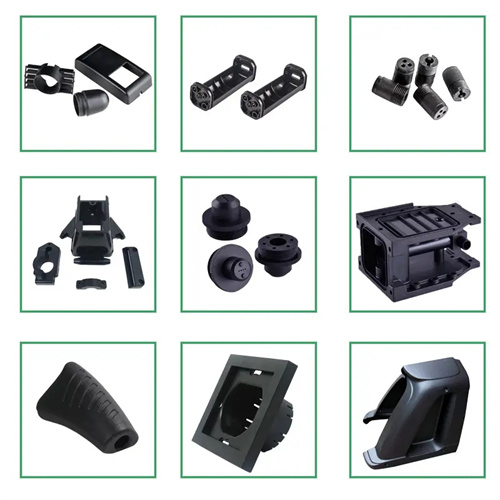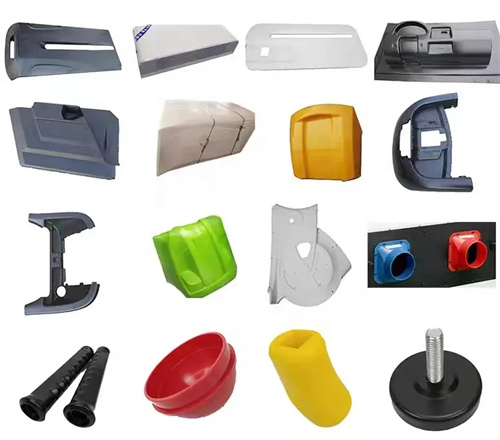Shrinkage issues in precision injection molding
Shrinkage in precision injection molding is a key factor affecting product dimensional accuracy. It arises from the volumetric contraction of the melt during cooling from a viscous flow state to a solid state. For plastic parts requiring ±0.01mm precision (such as optical lenses and precision gears), even slight fluctuations in shrinkage can result in out-of-tolerance performance. The magnitude of shrinkage is closely related to the type of plastic. Crystalline plastics (such as POM) can shrink by 2-3%, and this shrinkage process is accompanied by significant exothermic heat release during crystallization. For example, a POM gear with a designed pitch of 5mm could experience a ±0.01mm deviation due to shrinkage fluctuations of ±0.2%, exceeding precision transmission requirements. Amorphous plastics (such as PC) have lower shrinkage (0.5-1%) and more stable shrinkage. For example, the shrinkage deviation of a PC optical lens can be controlled within ±0.1%, meeting focal length accuracy requirements. Temperature fluctuations can also exacerbate shrinkage variations. For example, a precision connector exhibited dimensional deviations of 0.008mm between 25°C and 35°C, requiring control in a constant temperature chamber (20±1°C).

The rationality of mold design directly impacts shrinkage uniformity during precision injection molding. Cavity size compensation calculations must be based on the material’s actual shrinkage rate, not theoretical values. A precision bearing sleeve made of PA66+GF30 has a theoretical shrinkage rate of 1.2%. However, in actual production, due to uneven mold cooling, shrinkage rates in different areas vary by as much as 0.5%, resulting in excessive roundness in the inner hole. Through mold CAE analysis, differentiated shrinkage compensation was applied to different areas of the cavity: 1.4% compensation for thick walls and 1.0% for thin walls. The cooling water channel layout was optimized to keep the temperature difference between each area within ±2°C, reducing the shrinkage difference to 0.1% and achieving a roundness accuracy of 0.005mm. For complex structural plastic parts, sufficient demoulding angle (usually 0.5°-1°) must be set to avoid dimensional rebound caused by forced demoulding. A precision guide pin sleeve had a diameter shrinkage deviation of 0.012mm after demoulding due to a small demoulding angle (0.2°). After increasing it to 0.8°, the deviation was controlled within 0.005mm.

Precise control of process parameters is key to minimizing shrinkage fluctuations in precision injection molding, with parameter settings during the holding stage being particularly crucial. Insufficient holding pressure can lead to excessive shrinkage, while excessive pressure can generate internal stress. For example, a PC lens maintained a stable shrinkage rate of 0.6% at a holding pressure of 80 MPa. When the pressure dropped to 60 MPa, the shrinkage increased to 0.8%, resulting in excessive focal length deviation. Although the shrinkage rate dropped to 0.5% when the pressure was increased to 100 MPa, internal stress caused the lens to crack after coating. The holding time must be long enough to allow the gate to solidify. For a POM gear, the gate solidification time was 12 seconds, and the holding time was set to 15 seconds to ensure adequate shrinkage compensation, reducing shrinkage fluctuations from ±0.3% to ±0.1%. Injection speed stability also affects shrinkage. Using a servo injection molding machine with closed-loop control to keep speed fluctuations within ±2%, the tooth thickness deviation of a precision gear was reduced from 0.01mm to 0.005mm.

Material pretreatment and selection are equally important for shrinkage control in precision injection molding. Hygroscopic plastics, in particular, require thorough drying to prevent moisture-induced shrinkage. A PA6 precision nut shrank by 0.02mm within 24 hours after injection molding due to inadequate drying (moisture content 0.2%). By drying at 120°C for 4 hours, the moisture content was reduced to 0.05%, and dimensional stability improved to 0.005mm/24h. By selecting a specialized grade of low-shrinkage material, a precision instrument housing with ordinary ABS had a shrinkage of 1.5%. Switching to low-shrinkage ABS (with 5% glass beads added) reduced the shrinkage to 0.8%, with the fluctuation range narrowed to ±0.1%. For applications with extremely high requirements, fiber-modified materials can be used. For example, PP+GF20 has a shrinkage of only 0.5%, far less than the 2% of pure PP. A PP precision valve has improved its dimensional accuracy from IT10 to IT8 through fiber-modification.

Post-processing is the final step in shrinkage control during precision injection molding. Annealing can eliminate internal stress and stabilize dimensions. A precision part made of PEEK (used in high-temperature environments) exhibited significant internal stress after injection molding, resulting in a shrinkage of 0.03mm when used at 150°C. Annealing at 180°C for two hours relieved the internal stress, and the dimensional change at high temperatures was controlled to within 0.005mm. For crystalline plastics, constant temperature and humidity treatment can be used to promote complete crystallization. For example, a PA66 bearing exposed to 23°C and 50% humidity for 48 hours increased its crystallinity from 70% to 85%, achieving dimensional stability. Avoiding sudden temperature changes during post-processing is crucial. For example, a PC lens utilizes a stepped cooling process (20°C per hour from 120°C to room temperature), which improves dimensional stability by 40% compared to direct cooling. In addition, a shrinkage rate database was established to record the actual shrinkage values under different materials, molds, and process parameters, providing an accurate basis for new mold design. By accumulating 500+ sets of data, one company reduced the number of new mold trials from an average of 5 to 2, significantly shortening the development cycle.
